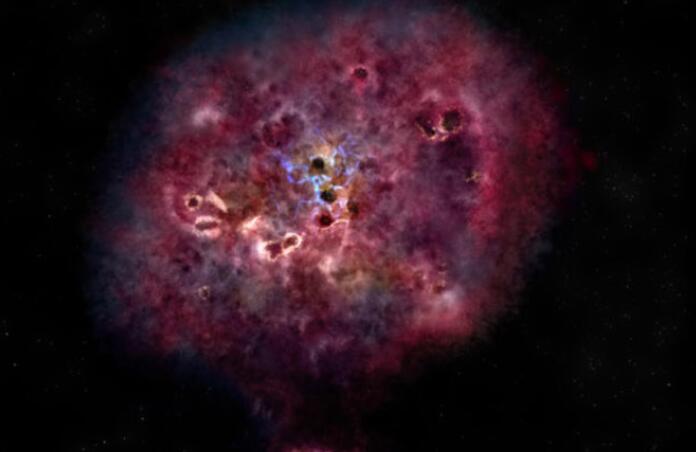Astronomers Discover Ancient Ultramassive Galaxy That Died Abruptly

Astronomers at the University of California, Riverside have discovered a peculiar ultramassive galaxy that existed for only a brief time in the early universe before becoming inactive. The ultramassive galaxy, known as XMM-2599, exploded with star formation before the universe was even 2 billion years old. By 1 billion years after the Big Bang, the galaxy had formed a mass equal to over 300 billion suns—the single most massive galaxy we've ever discovered from that timeframe. By 1.8 billion years, the galaxy had stopped formation entirely, which poses a fascinating question, why did it suddenly stop?
Accelerated Growth Rate
Most galaxies that began forming shortly after the Big Bang didn't stop so abruptly, they went on forming stars for billions of years, but they also didn't have such an accelerated growth rate. According to data collected by the researchers using spectroscopic analysis, the XMM-2599 formed stars at a rate of 1,000 solar masses each year for 500 million years. Compared to the Milky Way's star formation rate, that's about 250 times higher. This accelerated growth is not unheard of for galaxies around since the beginning of the universe—EQ J100054+023435 is another example of a star formation rate of 1,000 solar masses per year. However, XMM-2599’s early-universe counterparts were much smaller, and they also didn’t abruptly die out. Whether or not its immense growth rate and sheer size had any part to play in its demise is unknown.
Future Research

The discovery of this behemoth is already changing what we know about early star formation after the Big Bang. Past cosmological models suggested the existence of galaxies this size was improbable, and that they didn't have ample time to become so massive. XMM-2599 is one of a few discoveries over the past few years that have prompted tweaks to these cosmological models. Newer numerical models now account for the possibility of much more massive galaxies, allowing astronomers to expand their research. XMM-2599’s discovery is sure to keep astronomers busy for a while.
What the astronomers have discovered so far is already fascinating, but it’s also unlocked the path for further research regarding its particularly short lifespan. There are multiple possibilities for the outcome of the ultramassive galaxy. It could have remained dead, come back to life a few billion years later, or even engulfed other galaxies to become even larger and brighter. Though XMM-2599's existence has raised more questions than answers, more questions are never a bad thing in science!